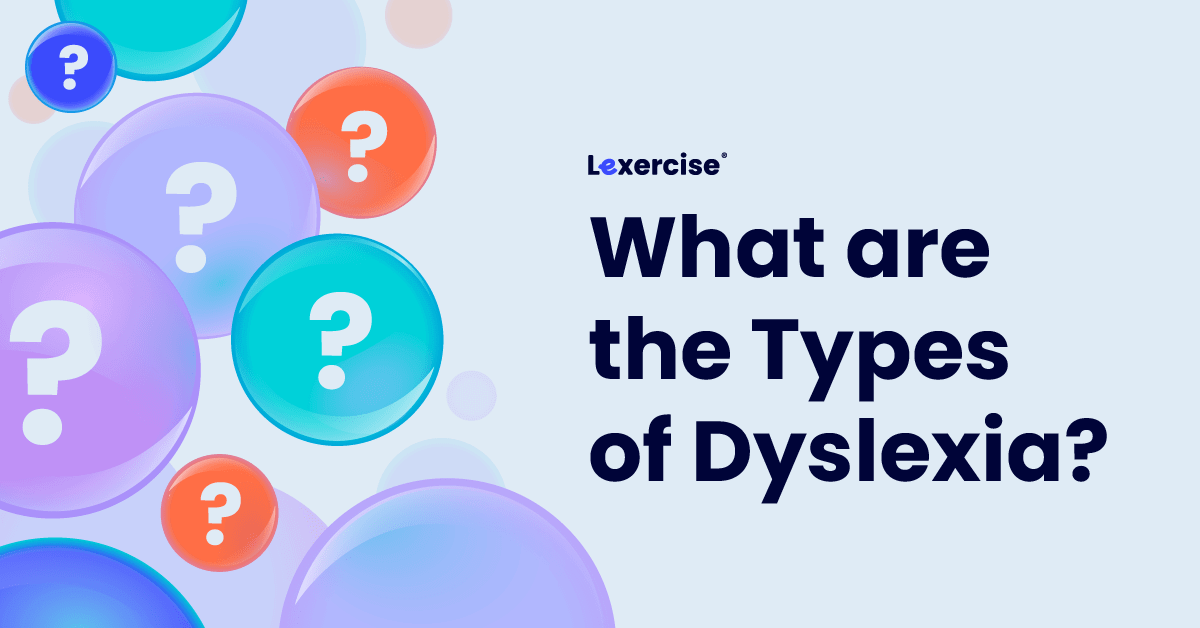Unpacking Dyslexia: Are There Really Different “Types” and What Does It All Mean?
Written by Sandie Barrie Blackley, Speech-Language Pathologist
Published on October 16, 2025

At Lexercise, we’re dedicated to demystifying dyslexia and providing clarity for families and educators. One of the most common questions we hear is about the “types” of dyslexia. While there isn’t a strict medical classification for distinct “types,” understanding the different ways dyslexia manifests is crucial for effective intervention and support.
Think of dyslexia as a spectrum, with individuals experiencing a unique combination of challenges. These challenges often stem from a core difficulty with phonological processing – the ability to hear, identify, and manipulate the individual sounds (phonemes) within words. However, how this core difficulty impacts reading and learning can vary significantly, leading to different profiles or “types” of dyslexia that we’ll explore below.
Understanding the Different Profiles of Dyslexia
When we talk about “types” of dyslexia, we’re often referring to the primary dyslexia symptoms and signs that a person exhibits:
1. Phonological Dyslexia (Dysphonetic or Auditory Dyslexia):
This is the most prevalent form. Individuals with phonological dyslexia struggle most with sounding out words (decoding). They have difficulty connecting letters to their corresponding sounds and blending those sounds into words. This often leads to challenges with spelling, as they struggle to break words down into their phonetic components.
2. Surface Dyslexia (Dyseidetic or Visual Dyslexia):

Often contrasted with phonological dyslexia, individuals with surface dyslexia primarily struggle with recognizing whole words by sight, particularly irregular words that don’t follow typical phonetic rules (e.g., “yacht,” “said”). While they might be able to sound out words phonetically, their reading often lacks fluency and automaticity. They may also confuse letters that look similar, which contributes to the perception of “visual dyslexia.”
3. Rapid-Naming Dyslexia (Rapid Automatic Naming Deficit):
This isn’t always considered a standalone type but often co-occurs with other profiles. Individuals with rapid-naming dyslexia have difficulty quickly and automatically retrieving and naming familiar visual stimuli like letters, numbers, colors, or objects. This deficit significantly impacts reading fluency and speed, even if they can accurately decode words.
4. Double-Deficit Dyslexia
Considered one of the more severe profiles, double-deficit dyslexia combines difficulties found in both phonological dyslexia and rapid-naming dyslexia. This means individuals face significant challenges with both decoding and reading fluency, making reading a particularly laborious and slow process.
5. Visual Dyslexia (Specific Visual Processing Issues)

While surface dyslexia is sometimes broadly referred to as visual dyslexia, the term “visual dyslexia” can also refer to specific visual processing issues where text might appear to move, blur, or double. It’s important to distinguish this from core language-based dyslexia, although visual processing difficulties can certainly compound reading challenges.
Developmental vs. Acquired Dyslexia: When Does It Appear?
Beyond these descriptive profiles, dyslexia is also categorized by its onset:
- Developmental Dyslexia: This is the most common form. It is a lifelong learning difference present from birth, often with genetic dyslexia risk factors contributing to its occurrence. It’s diagnosed when there’s an unexpected difficulty in reading despite adequate intelligence, motivation, and instruction.
- Acquired Dyslexia (or Alexia): This type of dyslexia occurs due to brain injury, such as a head trauma, stroke, or neurological disease. It involves a loss of previously acquired reading abilities.
Beyond the Labels: What Really Matters for Support
Understanding these “types” helps us recognize the diverse ways dyslexia manifests, but the crucial step is effective intervention. Regardless of the specific profile, evidence-based approaches are key.

At Lexercise, our approach is rooted in multisensory intervention, drawing heavily from principles like the Orton-Gillingham Method. This systematic and explicit instruction helps individuals build strong phonological awareness, decoding, and encoding (spelling) skills. It engages multiple senses – sight, sound, touch, and movement – to create stronger neural pathways for learning.
The Bigger Picture: Neurodiversity and Support
Dyslexia is part of neurodiversity in learning. It’s a difference in brain processing, not a deficit in intelligence or effort. Recognizing this helps us shift from a remedial mindset to one of empowerment.
Individuals with dyslexia often have associated learning difficulties such as dysgraphia (writing challenges) or dyscalculia (math difficulties), which should also be addressed. They may also experience emotional impacts like anxiety or low self-esteem due to their struggles.
Effective dyslexia support strategies involve:
- Early identification: Through professional dyslexia screening and assessment, we can identify risk factors and intervene before reading difficulties become entrenched.
- Individualized, structured literacy therapy: Like the programs offered by Lexercise, which explicitly teach phonics, phonemic awareness, fluency, word part analysis, vocabulary, and comprehension.
- Accommodations: Examples include extended time on tests, assistive technology, and access to audiobooks.
- Building self-advocacy skills: Empowering individuals to understand their learning profile and communicate their needs.
At Lexercise, we believe in unlocking the potential of every learner. By understanding the nuances of dyslexia and implementing tailored, evidence-based interventions, we help individuals overcome reading challenges and thrive.
Concerned about dyslexia? Take our free, online dyslexia screener today to understand your child’s unique learning profile and explore personalized support options.
Improve Your Child’s Reading
Learn more about Lexercise today.
Schedule a FREE
15-minute consultation


